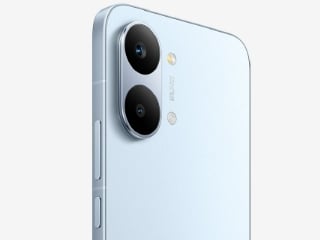- Home
- Science
- Science News
- NASA's Parker Solar Probe Gets 'Revolutionary' Heat Shield
NASA's Parker Solar Probe Gets 'Revolutionary' Heat Shield

Photo Credit: NASA/Johns Hopkins APL/Ed Whitman
Parker Solar Probe’s heat shield is lifted and realigned with the spacecraft’s truss
Ahead of its August launch, NASA's Parker Solar Probe - the mission aiming to get closest to the Sun than ever by any human-made object - has got its "revolutionary" heat shield permanently attached to the spacecraft, the US space agency said.
The probe's heat shield - called the Thermal Protection System, or TPS - was reinstalled on the spacecraft on June 27, NASA said in a statement on Thursday.
The reinstallation of the heat shield - which was briefly attached to the spacecraft during testing in the autumn of 2017 - marks the first time in months that Parker Solar Probe has been fully integrated.
A mission 60 years in the making, Parker Solar Probe will make a historic journey to the Sun's corona, a region of the solar atmosphere.
With the help of its heat shield, the spacecraft's orbit will carry it to within four million miles of the Sun's fiercely hot surface, where it will collect data about the inner workings of the corona.
The eight-foot-diameter heat shield will safeguard everything within its umbra, the shadow it casts on the spacecraft, NASA said.
At Parker Solar Probe's closest approach to the Sun, temperatures on the heat shield will reach nearly 1,371 degrees Celsius, but the spacecraft and its instruments will be kept at a relatively comfortable temperature of about 29.4 degrees Celsius.
The heat shield is made of two panels of superheated carbon-carbon composite sandwiching a lightweight 4.5-inch-thick carbon foam core.
The Sun-facing side of the heat shield is also sprayed with a specially formulated white coating to reflect as much of the Sun's energy away from the spacecraft as possible.
Because Parker Solar Probe travels so fast - 69,2018 km per hour at its closest approach to the Sun, fast enough to travel from Philadelphia to Washington, DC, in about one second - the shield and spacecraft have to be light to achieve the needed orbit.
The heat shield itself weighs only about 72.5 kg, NASA said.
Catch the latest from the Consumer Electronics Show on Gadgets 360, at our CES 2026 hub.
Related Stories
- Samsung Galaxy Unpacked 2025
- ChatGPT
- Redmi Note 14 Pro+
- iPhone 16
- Apple Vision Pro
- Oneplus 12
- OnePlus Nord CE 3 Lite 5G
- iPhone 13
- Xiaomi 14 Pro
- Oppo Find N3
- Tecno Spark Go (2023)
- Realme V30
- Best Phones Under 25000
- Samsung Galaxy S24 Series
- Cryptocurrency
- iQoo 12
- Samsung Galaxy S24 Ultra
- Giottus
- Samsung Galaxy Z Flip 5
- Apple 'Scary Fast'
- Housefull 5
- GoPro Hero 12 Black Review
- Invincible Season 2
- JioGlass
- HD Ready TV
- Laptop Under 50000
- Smartwatch Under 10000
- Latest Mobile Phones
- Compare Phones
- Red Magic 11 Air
- Honor Magic 8 RSR Porsche Design
- Honor Magic 8 Pro Air
- Infinix Note Edge
- Lava Blaze Duo 3
- Tecno Spark Go 3
- iQOO Z11 Turbo
- OPPO A6c
- Lenovo Yoga Slim 7x (2025)
- Lenovo Yoga Slim 7a
- Lenovo Idea Tab Plus
- Realme Pad 3
- Moto Watch
- Garmin Quatix 8 Pro
- Haier H5E Series
- Acerpure Nitro Z Series 100-inch QLED TV
- Asus ROG Ally
- Nintendo Switch Lite
- Haier 1.6 Ton 5 Star Inverter Split AC (HSU19G-MZAID5BN-INV)
- Haier 1.6 Ton 5 Star Inverter Split AC (HSU19G-MZAIM5BN-INV)







![[Sponsored] Haier C90 OLED TV | Dolby Vision IQ, 144Hz OLED and Google TV in Action](https://www.gadgets360.com/static/mobile/images/spacer.png)









